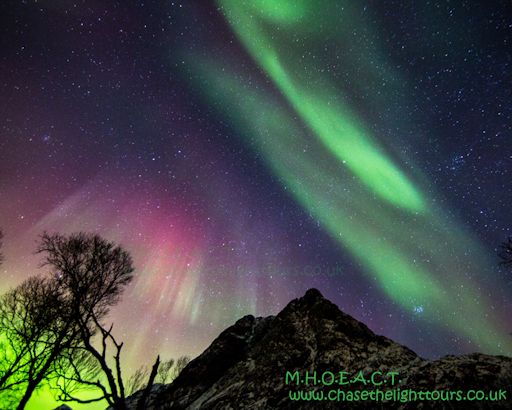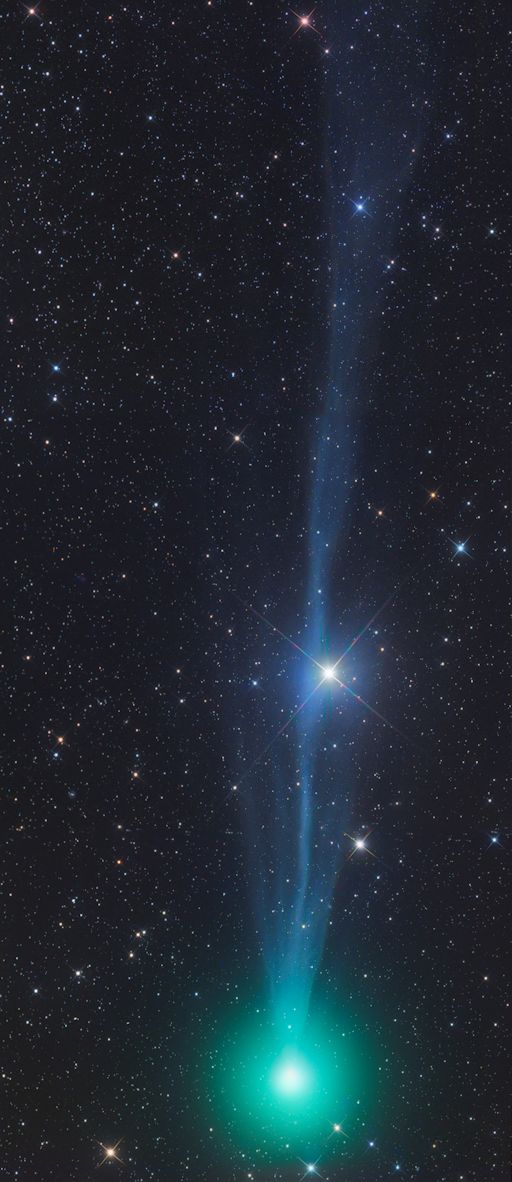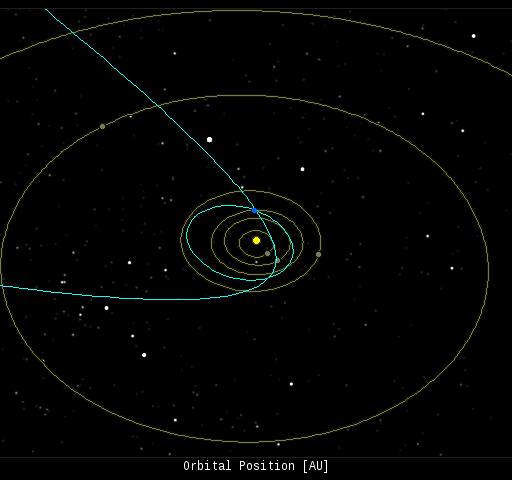Learn to photograph Northern Lights like a pro. Sign up for Peter Rosen's Aurora Photo Courses in Abisko National Park. | | | PEACEFUL SUN: With no sunspots actively flaring, the sun is quiet and solar activity is low. NOAA forecasters estimate a waning 10% chance of X-flares on Christmas Day. Solar flare alerts: text, voice HOLIDAY LIGHTS: A stream of solar wind is bufeting Earths magnetic field, and this is causing geomagnetic unrest around the poles. Last night around the Arctic Circle, Christmas carolers and last minute gift-givers witnessed a beautiful display of holiday lights: 
"Vi var ute og leverte julegaver, bare måtte stoppe litt... 5min ble 5timer....," says aurora tour guide Marianne Bergli, who photographed the display in Tromsø, Norway. "God jul alle sammen." Translated: "We were out delivering Christmas gifts and just had to stop a bit ... 5 minutes became 5 hours. Merry Christmas everyone!" The show's not over. NOAA forecasters estimate a 35% chance of polar geomagnetic storms on Dec. 25th as the solar wind continues to blow. Browse the gallery for latest images from around the Arctic Circle. Aurora alerts: text, voice Realtime Aurora Photo Gallery CHRISTMAS COMET: Is there a cylindrical package under your Christmas tree? Open it now. A small telescope is all you need to see Comet Lovejoy (C/2014 Q2). Discovered just last August by Terry Lovejoy in Australia, the green comet is brightening faster than expected as it moves into northern skies just in time for Christmas. Trace the comet's tail down the page for more information: 
Gerald Rhemann took this picture on Dec. 21st using a remotely-operated telescope in Namibia. The comet's sinuous blue ion tail contrasts beautifully with its puffy green atmosphere. The colors come from ionized carbon monoxide (CO+) and diatomic carbon (C2), which glow blue and green, respectively, in the near-vacuum of interplanetary space. "Last night (Dec. 23rd), the comet was easy to see in binoculars as a 5th magnitude fuzzy star," reports Alan Dyer of New Mexico. "I could just see the comet naked eye knowing exactly where to look south of Orion in the constellation Columba the dove." Where is that? These finder charts from Sky and Telescope can help you find the comet. Better yet, if that cylindrical object is a GOTO telescope, just plug in the comet's coordinates and let the telecope find it for you. Realtime Comet Photo Gallery
Realtime Space Weather Photo Gallery
Every night, a network of NASA all-sky cameras scans the skies above the United States for meteoritic fireballs. Automated software maintained by NASA's Meteoroid Environment Office calculates their orbits, velocity, penetration depth in Earth's atmosphere and many other characteristics. Daily results are presented here on Spaceweather.com. On Dec. 25, 2014, the network reported 4 fireballs.
(3 sporadics, 1 December Leonis Minorid)  In this diagram of the inner solar system, all of the fireball orbits intersect at a single point--Earth. The orbits are color-coded by velocity, from slow (red) to fast (blue). [Larger image] [movies] Potentially Hazardous Asteroids ( PHAs) are space rocks larger than approximately 100m that can come closer to Earth than 0.05 AU. None of the known PHAs is on a collision course with our planet, although astronomers are finding new ones all the time. On December 25, 2014 there were potentially hazardous asteroids. Recent & Upcoming Earth-asteroid encounters: | Asteroid | Date(UT) | Miss Distance | Size | | 2007 EJ | Jan 12 | 68.9 LD | 1.1 km | | 1991 VE | Jan 17 | 40.6 LD | 1.0 km | | 2004 BL86 | Jan 26 | 3.1 LD | 650 m | | 2008 CQ | Jan 31 | 4.8 LD | 36 m | | 2000 EE14 | Feb 27 | 72.5 LD | 1.6 km | Notes: LD means "Lunar Distance." 1 LD = 384,401 km, the distance between Earth and the Moon. 1 LD also equals 0.00256 AU. MAG is the visual magnitude of the asteroid on the date of closest approach. | | The official U.S. government space weather bureau | | | The first place to look for information about sundogs, pillars, rainbows and related phenomena. | | | Researchers call it a "Hubble for the sun." SDO is the most advanced solar observatory ever. | | | 3D views of the sun from NASA's Solar and Terrestrial Relations Observatory | | | Realtime and archival images of the Sun from SOHO. | | | from the NOAA Space Environment Center | | | the underlying science of space weather | | 
